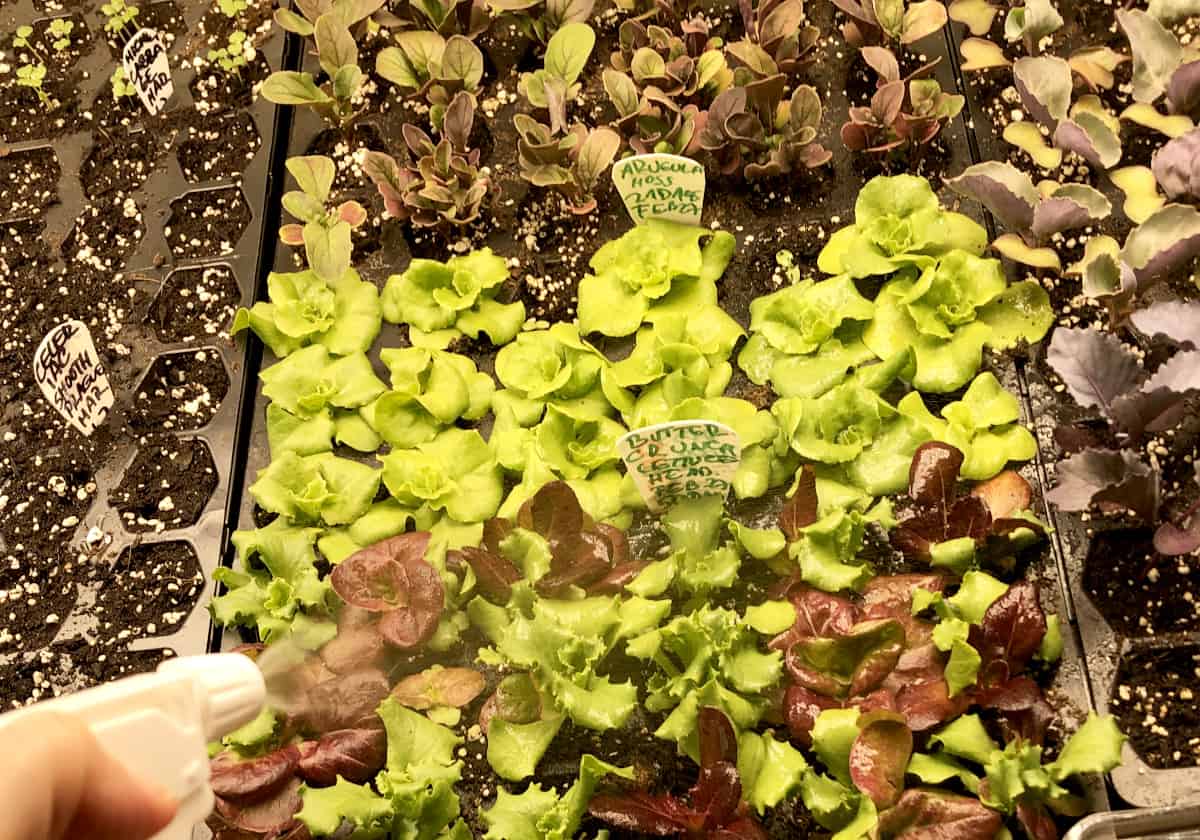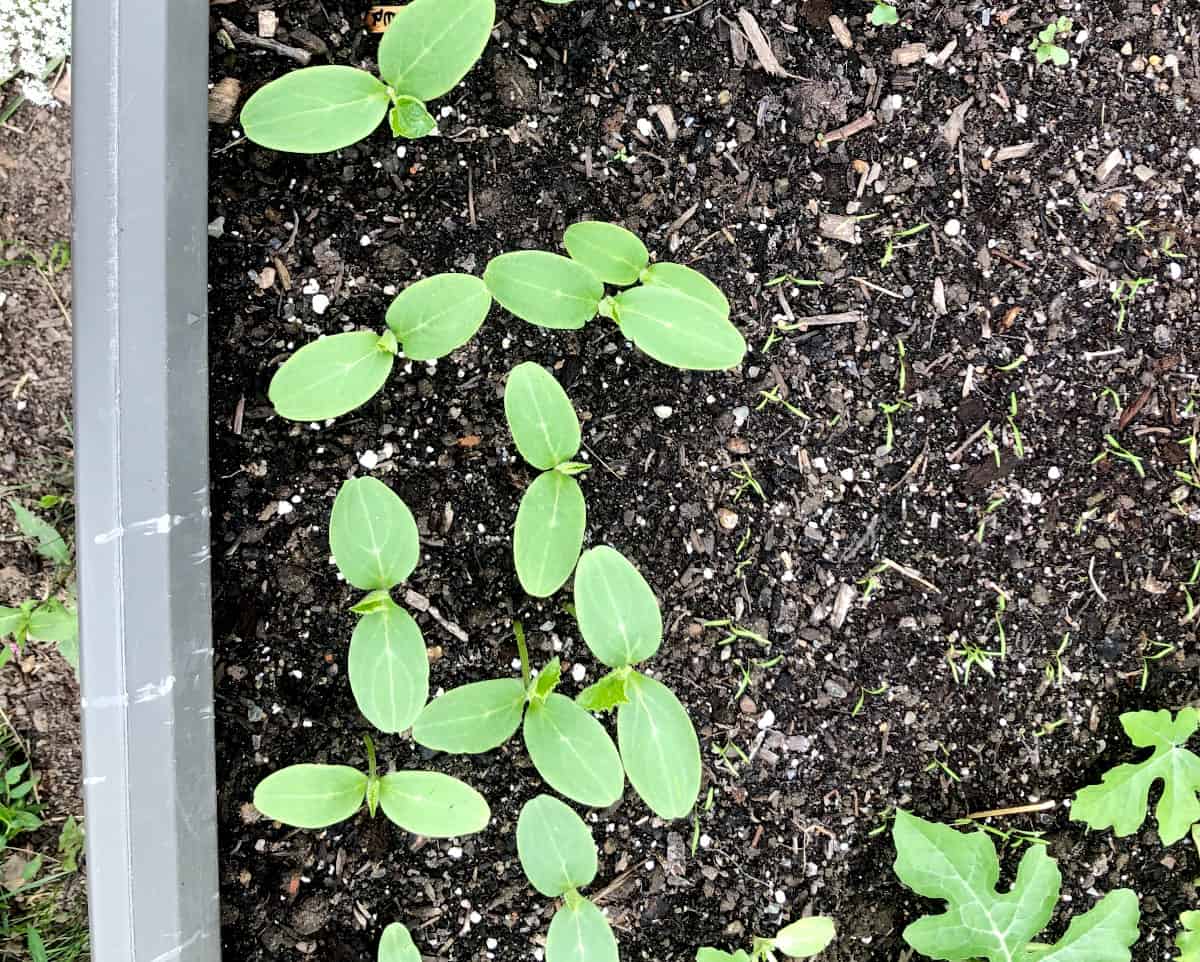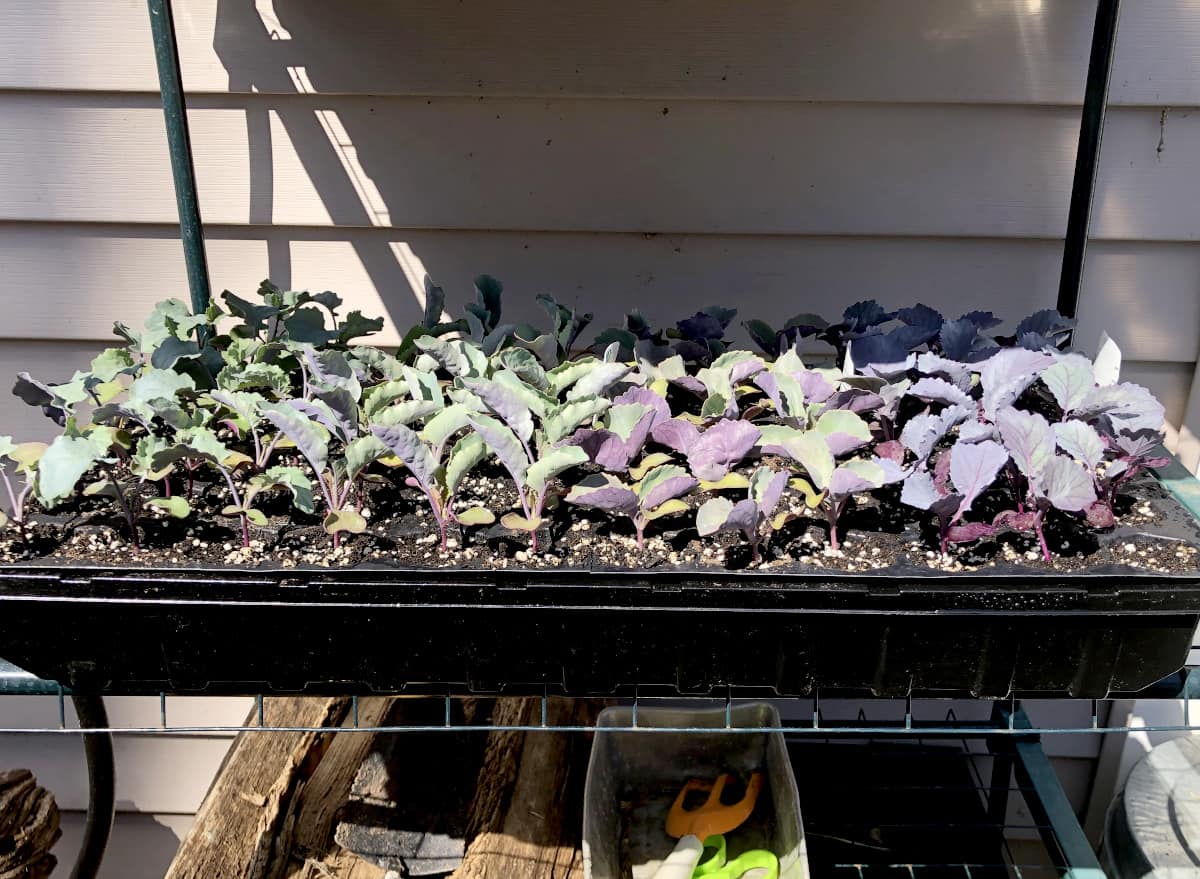April is one of my favorite months of the year! It is one of the best months for gardeners. The spring has arrived, and in many zones, the soil has towed and is now workable. There are tons and tons of beautiful seeds that can be directly sowed into the garden along with healthy seedlings that are now ready to be transplanted outdoors. In April, your gardening space which looked totally dead until now will transform into a fresh new planted garden with baby seedlings all around and plant labels marking the spots where the seeds will soon pop up! April is one of the busiest months of the gardener’s year, and I love it! Finally, we get to dig in the dirt and watch our green plants take off!
There is still plenty to sow indoors. You can still sow cool-weather crops for succession planting, but we start to sow some of the warm-season crops as well! Seeds that can be sowed indoors in April, in zone 6 are leafy greens like lettuce, Swiss chard, spinach, Bok choy, and arugula. Sowed can be vegetables from the cabbage family such as cabbage, collards, broccoli, cauliflower, and brussels sprouts. Celery and herbs including dill, cilantro, and basil can also be started indoors. April is the perfect time to finally sow indoors some of the warm-weather crops. You can now start the seeds of tomatoes and peppers!

Is April too soon to start all warm-weather crops in zone 6?
April in zone 6, might be too soon for some of the warm-weather crops that sprout and grow fast. Cucumbers, zucchini, squash, melons, and beans are those warm-weather crops that sprout fast and grow in no time. These usually need only 3-4 weeks to be kept indoors. As they grow relatively quickly, they need to be transplanted within a month of starting them. Therefore, wait about 4 weeks before your last frost date to start those.

These are very tender crops and would be easily destroyed by occasional frost at night which is still highly possible in April. frost. It would be just a waste of time, seeds, and effort if you planted those too early and let them die in frost. What could also happen is that these seedlings would grow too much by the time the danger of frost is completely over and you would then have to transplant them into larger containers indoors, then again transplant them outdoors once the weather is warm enough. By that time these seedlings would be double transplanted and too big. They might get transplant shock and would take much too long to come out of it. Rather be patient and sow these tender plants at the right time for them. The younger you plant them outdoors the better they take off, and the better they deal with the transplanting.
If you are all new to the whole hardiness zone thing and have no idea when is your last frost date or even what it actually is, do not worry. I invite you to visit my article What do hardiness zones mean and how to determine yours. In this good read, I will explain what hardiness zones and, and you will easily be able to find your hardiness zone and determine your last and first frost date. You will be no more lost in a talk about hardiness zones and frost dates.
Should I do succession planting in April, zone 6?
April is the perfect time for your succession planting! You can sow indoors for your succession planting in April in zone 6. You can sow seeds of all the cool-weather crops in April, and have them ready to go out as soon as you pull something out of your garden space. Most seeds take about 4-8 weeks to grow into mature seedlings to be ready to be planted outdoors. By the time your harvest some other cool-weather crops from your garden, your seedlings sowed now, in April will be perfectly ready to replace the harvested plant.

Why to sow in succession?
The whole idea of succession planting is to maximize the growing season, provide you with continuous harvest, and fill up empty space in your valuable garden. When you harvest anything from your garden by harvesting the whole plant, you suddenly have an empty space that is either wasted by remaining empty, or you can simply have seedlings ready to fill it up. Why harvest only once from one space, when you can have multiple harvests from the same space during one growing season? Succession planting is a wise usage of space, time, and effort you put into your garden while filling up your pantry. There is nothing sadder than an empty space in a fertile garden during a limited growing season. If you do not success sow seeds, it might happen that at the time you want to fill some empty space in your garden, the gardening centers will no longer offer the seedlings you want, or will not offer any seedlings at all. Sow your own seeds for a succession planting and be ready to fill up empty space in your garden not relating to other sources that might be just out of seedlings.

What to sow indoors for succession planting in April, in zone 6
You can sow all over again all the cool-weather crops for an extended harvest. You can sow indoors all the leafy greens, lettuce, arugula, Swiss chard, kale, cabbage, broccoli, cauliflower, onions for bulbs, green onions, and brussels sprouts. Edible flowers that you can eat while they also attract pollinators, that you can sow indoors include Nasturtium, Marigolds, and calendula. All the annual herbs can be sowed indoors for succession planting.
While my first batch of onion seedlings is growing well, I would like to add more onions into my garden! I will be planting onions seeds again in April, in my zone 6 to later summer to early autumn harvest. They will mature later than the first batch I planted weeks ago, but that’s ok because they will be great to cure and store for winter!
Starting seeds indoors can bring many challenges. If you are new to gardening you might have many questions about how to actually start the seeds. Worry no more, as I thought of you, and have written multiple good reads you can look for a piece of sound advice. Please visit, How to start seeds and care for seedlings, here! Seeds and seedlings need good care, but after reading this blog post, you will have enough confidence and an idea of what and how to do it. Get to start, we all learn best when we do things.
For best success plan viable seeds, if you do not know if the seeds you have are viable or not, visit How to find out if the seeds are viable, here.
Learn how to germinate your seeds faster in one of my favorite articles, in which I share some handy tips on How to germinate seeds faster, to help you fill your growing space faster. The faster the seeds germinate, the sooner you have your seedlings ready to go out.
SOME GOOD READ
Easy vegetables to start from seed indoors
What are some common seed-starting problems?
The best way to start seeds outside

